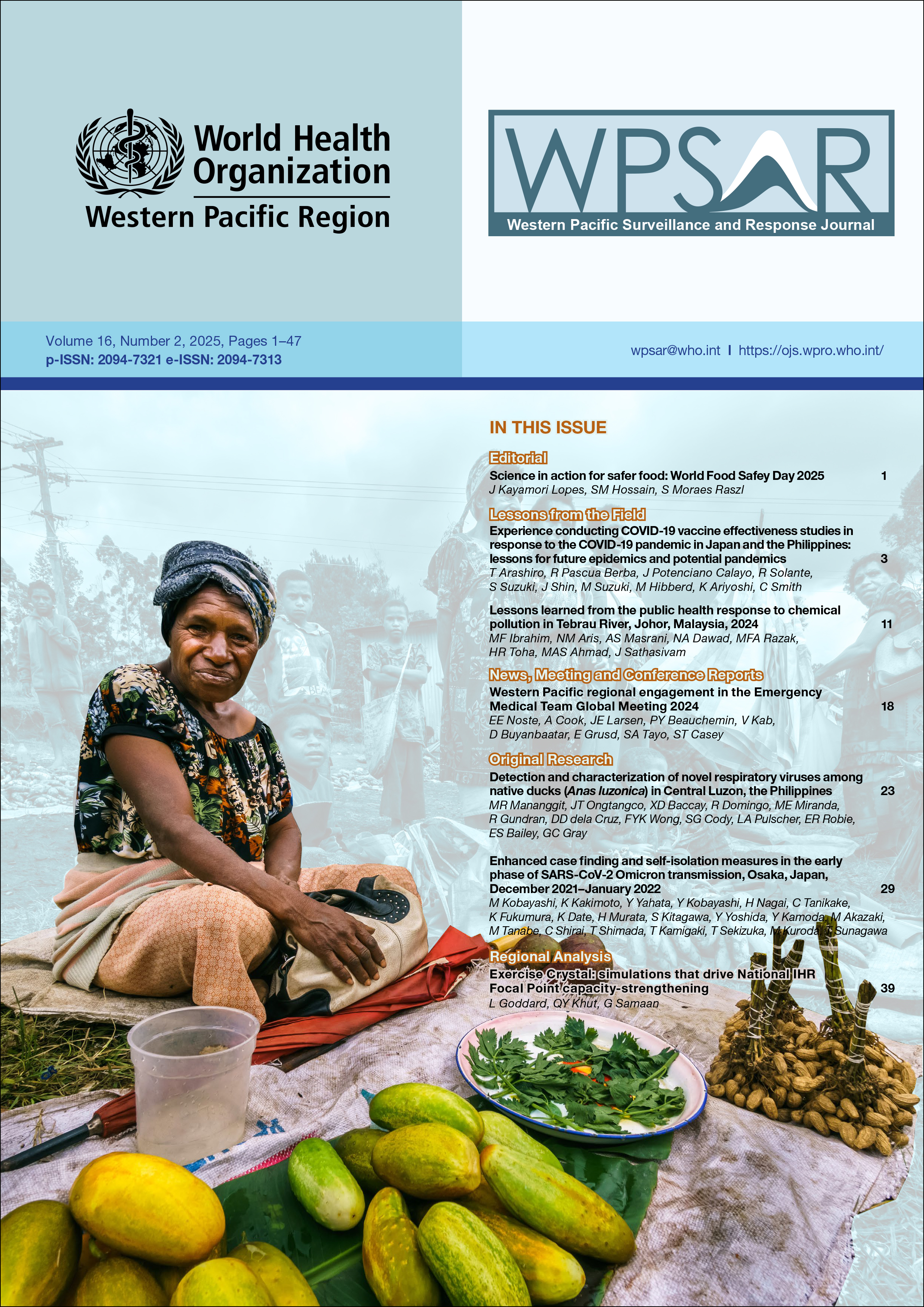Exercise Crystal: simulations that drive National IHR Focal Point capacity-strengthening
DOI:
https://doi.org/10.5365/wpsar.2025.16.2.1240Keywords:
World Health Organization, simulation training, health security, health communication, public healthAbstract
The International Health Regulations (2005; IHR) require States Parties to designate a National IHR Focal Point (NFP; i.e. a national centre) to ensure timely communications with the World Health Organization (WHO) about all events that may constitute a public health emergency of international concern and, following recent amendments, to designate a National IHR Authority to coordinate IHR (2005) implementation within the Parties. Since 2008, the WHO Regional Office for the Western Pacific has been running an annual simulation exercise, known as the IHR Exercise Crystal, to test and strengthen NFP functionality. This study analyses NFP performance during the IHR Exercise Crystal over a 16-year period (2008–2024, excluding 2009) to inform Member States’ planning for NFP capacity-strengthening in the context of the recent IHR (2005) amendments. Data collected about NFP performance during these exercises were analysed using descriptive statistics across six key NFP performance indicators. Key findings show that the proportion of NFPs that are accessible via email is consistently high (mean: 99%), but there is suboptimal NFP accessibility via telephone (mean: 64%). The proportion of NFPs participating in tele- and videoconferencing during the exercise improved over time (mean: 73%), as did the proportions of NFPs notifying WHO of simulated events (mean: 80%) and contributing information to the Event Information Site for NFPs (mean: 77%). The proportion engaging in multisectoral communication remained variable, with no clear trend (mean: 73%). These results demonstrate that significant progress has been made in strengthening NFP functionality, but there are opportunities for further improvement, particularly in the areas of telephone accessibility and multisectoral coordination. It is critical that States Parties continue strengthening and testing NFP functionality through simulation exercises and other capacity-building activities to ensure effective IHR (2005) implementation. Furthermore, States Parties should develop, test and maintain up-to-date standard operating procedures to support the clear demarcation of roles and responsibilities between the NFP and the National IHR Authority.

